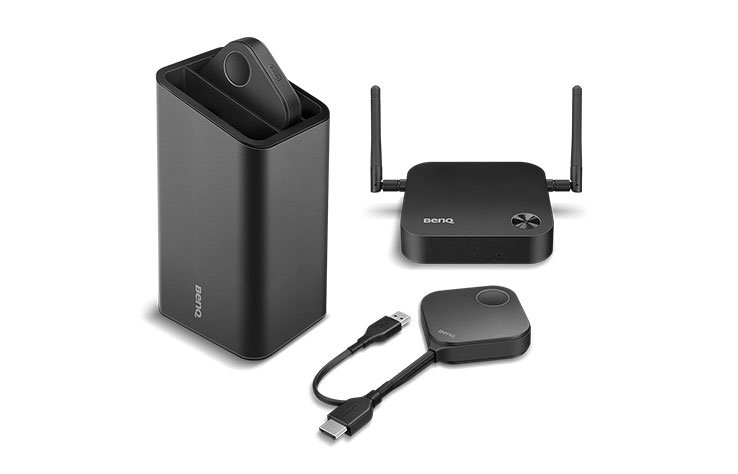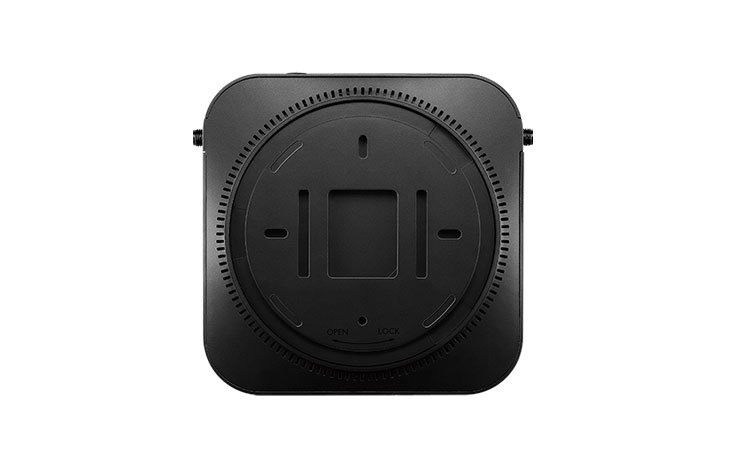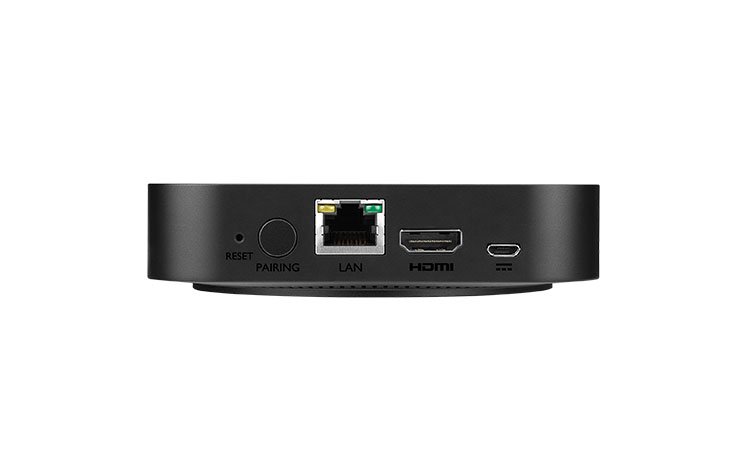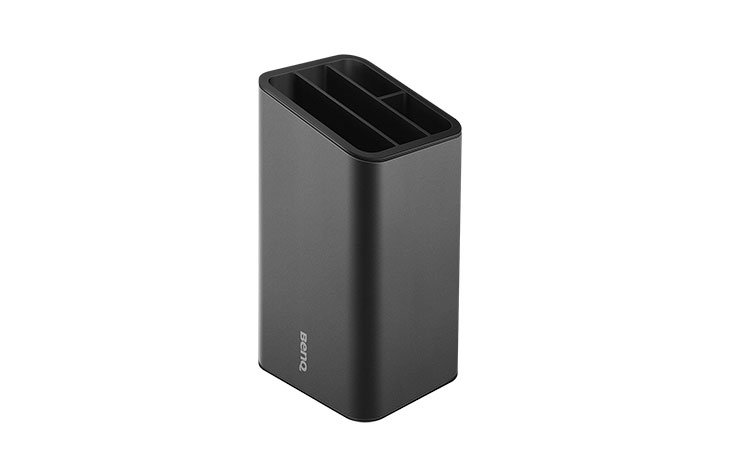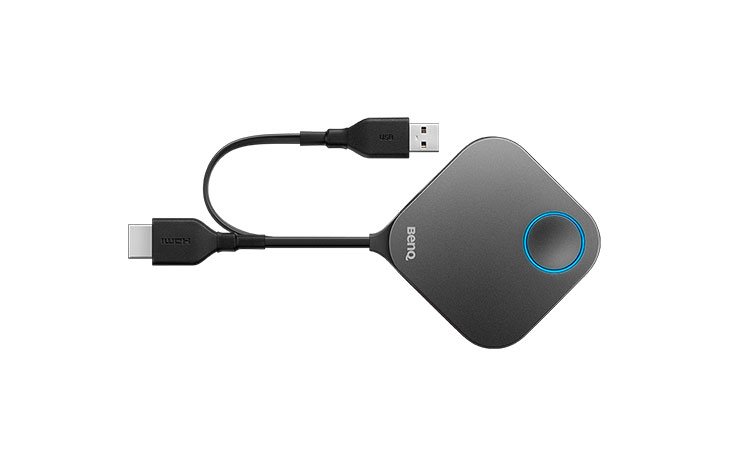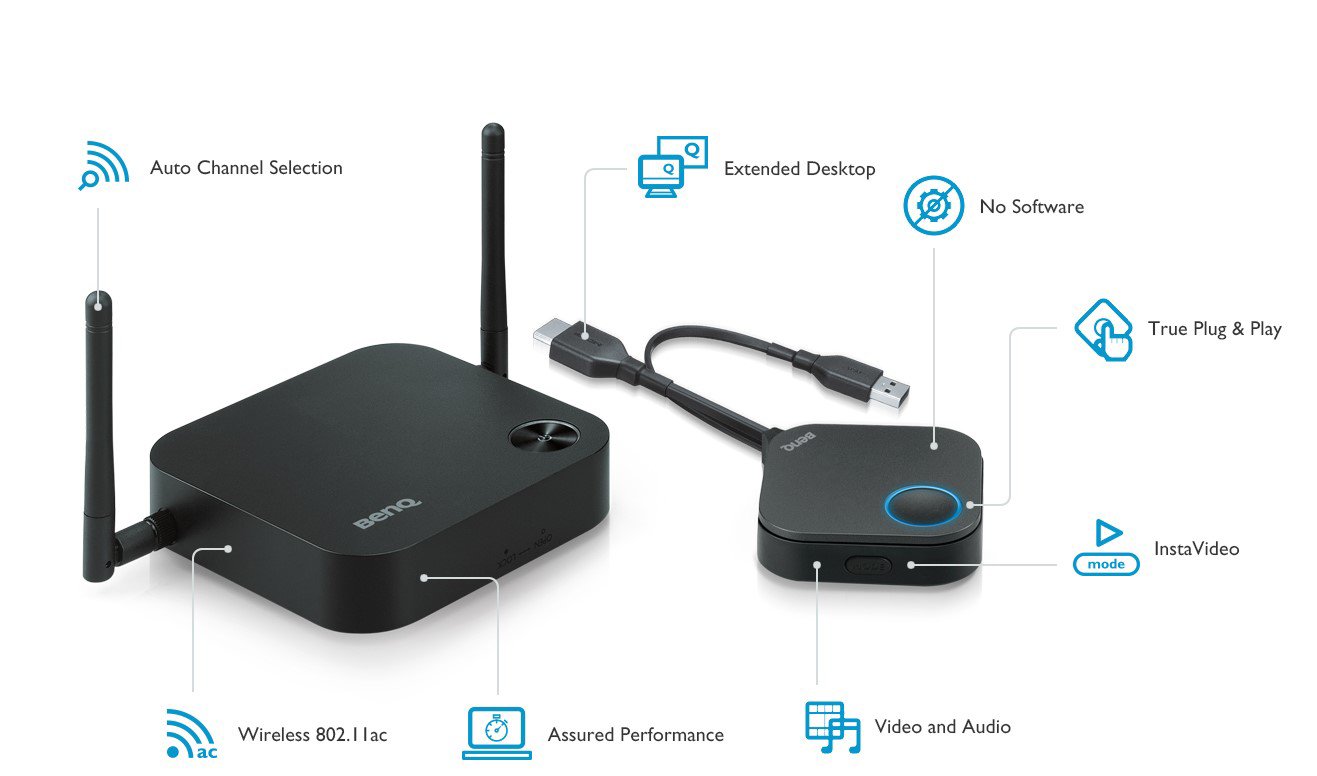What Is the Best Optoma Quickcast Alternative?
- BenQ North America
- 2019-11-07

What is the best Optoma QuickCast Pro-K alternative for collaboration rooms?
The Optoma QuickCast Pro-4K is a new wireless display and presentation system that is designed to make it easy to share your screen on a projector or flat panel display. But with more than 40 other competitors on the market, which one is right for your huddle spaces and collaboration rooms?
The QuickCast Pro-4K builds on the trend towards button-based wireless HDMI presentation systems to enable easy screen mirroring in the meeting room. The Optoma unit directly competes with the market-leading BenQ InstaShow and Barco ClickShare platforms at the strategic $999 price point (based on the market data from Futuresource Consulting). So what is the difference between these products and how they stack up on these three questions?
We will evaluate:
- What are the key differences between the products?
- What resolution & split-screen options are there?
- How secure are the products?
What are the most popular alternatives to the Optoma QuickCast Pro-4K?
BenQ InstaShow & InstaShow S
According to Futuresource, the BenQ InstaShow is the #2 selling wireless presentation system in Europe under $1000, second only to the Barco ClickShare. It uses a button architecture that enables users to plug in a button and start presenting in seconds. Both BenQ InstaShow models come with two buttons and a tabletop button holder, with the InstaShow S having more advanced features and higher 4K resolution.
Barco ClickShare CS-100 & CS-200+
According to Futuresource, the BenQ InstaShow is the #2 selling wireless presentation system in Europe under $1000, second only to the Barco ClickShare. It uses a button architecture that enables users to plug in a button and start presenting in seconds. Both BenQ InstaShow models come with two buttons and a tabletop button holder, with the InstaShow S having more advanced features and higher 4K resolution.
What are the key product differences?
Optoma units require batteries to be charged - BenQ does not.
The QuickCast Pro-4K has a built-in battery that requires recharging. This means you need to make sure the batteries are charged to use them, and if a co-worker does not charge the battery after use – you may not be able to use it for your meeting. Both the Barco ClickShare and BenQ InstaShow plugs into a USB port on your computer to power the transmitter. This keeps extra cables off the table – and ensures that it works every time. The InstaShow can also be used with non-PC devices such as digital cameras and media players by connecting to a generic USB power adapter.
QuickCast Pro-4K comes with only one Transmitter - and charges extra for the button holder
According to the Optoma datasheet, the system ships with one transmitter and one receiver. You can add additional transmitters – as well as an optional cable that charges four transmitters at one time. By contrast – the BenQ InstaShow models come with two transmitters standard – and a tabletop holder that is the winner of the iF Design award and the Good Design Award .
Optoma and BenQ InstaShow work without needing a proprietary app
Both the BenQ InstaShow and the QuickCast Pro-4K enable users to connect without having to download and install software quickly. This is a major advantage over other platforms such as Barco, Airtame, and Mersive that depend on a special app to run on your computer. Users with “locked down” computers may not be able to install these apps on their notebooks. By eliminating the need for any extra software, it helps the system to be easy for visitors and employees to use – without having to burden your IT department.
What about 4K resolution and split screens?
Quick Cast Pro-4K
The QuickCast Pro-4K will connect to your device using HDMI 1.4 protocol and display up to 4K resolution. According to the data sheet, they can split the screen into two different sources if you purchase an extra transmitter to show side by side images.
BenQ InstaShow and InstaShow S
While the Optoma unit has an advantage over the entry level InstaShow WDC-10 and WDC-10C, it falls short of the BenQ InstaShow S which also can output 4K resolution and has the ability to display four screens at the same time. Because the InstaShow S also supports AirPlay and Miracast, you can share content from multiple devices without having to purchase a button for every device.
Barco ClickShare CS-100
With the same $999 price point as the BenQ InstaShow WDC-10, the Barco ClickShare CS-100 also does not have a 4K resolution or split-screen. The functional equivalent of the QuickCast-Pro 4K is the CS-200+, which costs over twice as much as the Optoma unit to display 4K resolution with the same side by side two-way split-screen technology. This is somewhat offset by the fact that the Barco comes with two transmitter buttons – while the Optoma comes with only one.
How secure are they?
While ease of use is important for a wireless HDMI presentation system to keep meetings running efficiently to lower your overall meeting room cost – they can also represent security risks for bad actors who wish to use these systems to get access to presentation content (such as a salary review) that they don’t have permission to view – or use the system to break into the main network. How do these units stack up?
Optoma QuickCast Pro-4K
While Optoma has a market leader in projectors, but they have had security issues wireless HDMI presentation products in the past. For example, in April 2019 the Optoma WPS-Pro wireless presentation system was found to have significant security flaws that enabled a remote, unauthenticated attacker to execute operating system commands as root via crafted requests. According to the datasheet, the QuickCast Pro-4K does not encrypt the content of the transmitter encryption, and the Optoma website does not offer customers any security white paper on the product.
Barco ClickShare
The Barco ClickShare buttons also are highly secure, using encryption technologies and offers a detailed security white paper to their customers.
BenQ InstaShow
The BenQ InstaShow is built for security from the ground up. Each transmitter button uses advanced 128-bit encryption to ensure that nobody outside the room can see the presentation content. The unit can be accessed via the corporate LAN to make it easy for the IT department to perform tasks such as adding buttons and firmware management, but the unit is secure from external attack from the internet. The InstaShow will also show the status of the encryption when you plug in a button to your notebook – turning red until the encryption keys are shared – which then turns the light green – and you can tap your button to present. To learn more about InstaShow security protections – download the Security white paper here.
Comparison Table
So which system is right for your huddle room or meeting space? As with any technology decision, there are many factors to consider, but the guide below breaks down some of the key features many people are looking for in a wireless collaboration solution for their collaboration areas.
What is the best Optoma QuickCast Pro-K alternative available today?
For budget-sensitive buyers looking for a $999 solution, the BenQ InstaShow is one of the top-selling wireless HDMI alternatives because it keeps the simple and intuitive button architecture of the QuickCast Pro-4K and Barco ClickShare uses while eliminating the hassles of downloading applications (like the Barco) or having to keep charging your meeting room batteries (Optoma). It comes with two buttons for instant collaboration – while the Optoma QuickCast Pro and Barco CS-100 only come with a single transmitter. The InstaShow also provides an award-winning button holder to keep your table neat and organized.
For more advanced collaboration rooms, such as those with interactive flat panels, the BenQ InstaShow S is a solid alternative to the QuickCast Pro-4K. With 4K resolution and quad screen support, the system can stream four different presenters at the same time. With its touchback capability, the presenter can annotate and interact with the content on the screen, and capture the information on their Windows notebook.
From total cost of ownership perspective, the InstaShow also has the advantage of free updates, and the InstaShow S can be centrally managed using subscription-free BenQ’s Device Management System (DMS) software.
